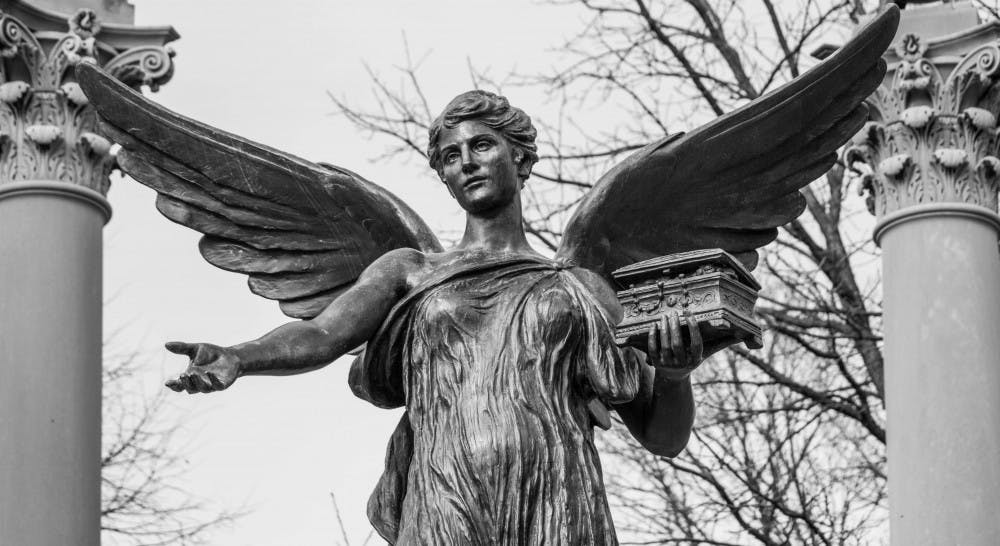Editor's note: Peep the Past is a Ball State Daily News series featuring historical events, individuals and topics relating to the Muncie and Ball State communities. If you have any suggestions as to who or what we should feature next, send an email to news@bsudailynews.com.
Myths of flapping wings, secret urns and good luck have swirled around Ball State's most iconic statue for decades — but what's the truth behind Beneficence?
“Benny,” as students call the statue, is a staple of Ball State's image and is a symbol of the school’s gratitude to the Ball brothers. The statue was proposed by the Muncie Chamber of Commerce in 1927 to express gratitude to the Ball brothers’ generosity. According to Chamber records, the renowned Daniel Chester French was chosen to sculpt the statue.
RELATED: PEEP THE PAST: Trains play a key role in Muncie's history.
French was a renowned architect who had sculpted the statue of Abraham Lincoln that now sits at the Lincoln Memorial on the National Mall in Washington, D.C. French chose landscape architect Richard Henry Dana to choose the location and to design the platform on which the statue currently sits on the north end of Ball State's campus.
The project would be French’s last — he died in 1931. Neither French nor Dana lived to see the dedication.
At the time, the statue itself cost approximately $50,000, which is around $700,000 in today’s money. The statue was finished in 1930, but the installation took much longer due to the lack of funds during the Great Depression, according to Chamber records.
However, over 11,000 people donated money to help with the completion of the memorial. According to Ball State University: An Interpretive History, the statue was dedicated on Sept. 26, 1937. Glenn Frank, former president of the University of Wisconsin, gave the dedicatory address, and a local banker by the name of Robert Henry Meyers presided over the ceremony.
Beneficence means “the doing of good," and the name was chosen for the statue to describe the feeling that the community had for what the Ball Brothers had done. By the time the memorial was completed, the Balls’ philanthropies in Muncie had a value of $7 million.
The statue has become a feature of the campus and a symbol of Ball State.
For Kaitlyn Ewing, a junior hospitality and food management major, "Benny" is more than just a statue.
"When I see or think of Benny, the first thing that pops into my head is the word 'home,'" Ewing said. "I found family in my friends and this community."
"Benny" is made out of bronze, and the statue has one hand reaching out to welcome new students to campus. The other hand holds a treasure box that represents the wealth that knowledge brings. The Beneficence statue also has a sister statue called "Casting Bread Upon the Waters," which sits in the Boston Gardens Park in Boston. Instead of a box, the sister statue holds a basket.
But for many of those who've called Ball State home, the statue represents their time at the university and the legacy the Ball Brothers left on the campus and the surrounding Muncie community.
"It represents who I've become here," Ewing said. "And how much I still get to learn and grow."





